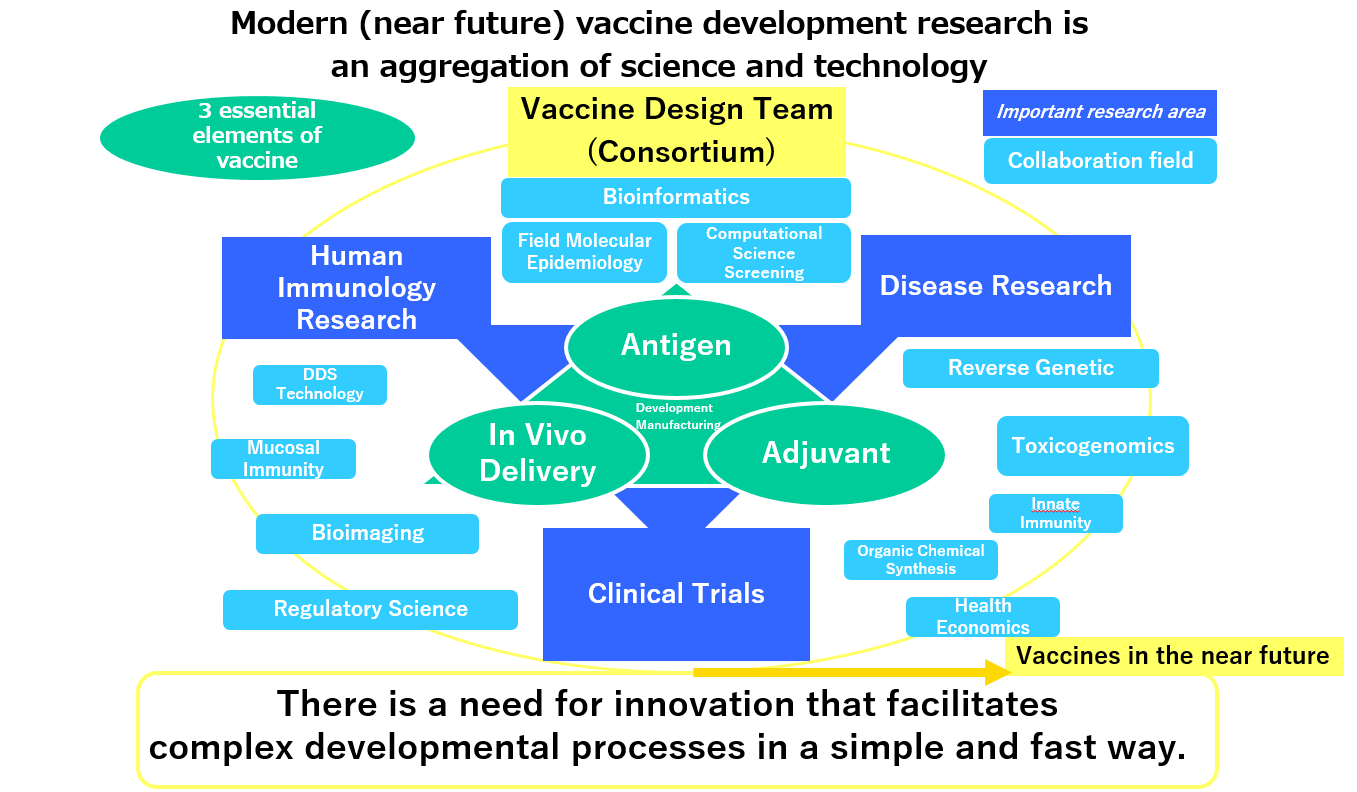Project Background
Project Background
Preventive vaccine development is considered to be one of the most successful medical technologies to date. Thanks to the rapid advances in vaccination research, we are no longer threatened by smallpox, tetanus, or polio. These diseases are classified as vaccine-preventable diseases (VPDs), of which there are 27.
However, some vaccine-available infectious diseases, such as influenza, tuberculosis, pertussis, measles, rubella, and HPV, among others, have not yet been eliminated due to inadequate control of infectious diseases for various reasons.
For example, most people have antibodies against influenza, tuberculosis, and whooping cough, and although vaccines are available, they are not effective or do not provide long-term immunization. Although vaccines are useful medical tools with a long history of human application, there are still many problems to solve.
Vaccine development research is becoming more comprehensive, incorporating the latest technologies from various fields of science. The development process requires approximately 20 years, a budget of more than 100 billion yen, and more than 100,000 test subjects, making it a more extensive and expensive commitment than empirical vaccine development in the past.
Looking at the current status of coronavirus vaccine development, it has become clear that successful research and development requires collaborative efforts between the industry, academia, government, and private sectors (Fig. 1).
Recent studies have shown that antigens, adjuvants, and delivery systems are all essential in developing an effective vaccine. For vaccine research to be translated into actual development, it is necessary for experts in key research areas of human immunology, epidemiology, and clinical research, among others, to collaborate in order to advance technological innovation.
Therefore, the modern vaccine development industry, as a conglomerate of science and technology, can be equated to the automobile and aircraft industries.
Modern (near future) vaccine development research is a collection of science and technology (Fig. 1).

Considering the time, budget, and cost of human resources required in the development process directly reflects the time and costs of commercializing vaccines; thus, there is a need for innovative technologies/strategies that simplify and accelerate this complex process.
Considering these issues, we have been conducting research to elucidate the mechanisms of the three essential elements of vaccines (i.e., antigens, adjuvants, and delivery systems). As new scientific insights emerge, it becomes clear that vaccine development could be simplified if these three elements were further developed. Therefore, we aim to collate and incorporate innovative scientific and commercial practices in vaccine development by refining the development process of antigens, adjuvants, and delivery systems individually and modularizing them.
In 2020, the pandemic of a newly discovered coronavirus underscored the importance and urgency of vaccine research.
The new coronavirus pandemic occurred just as we were about to lunch groundbreaking innovations. Ironically, it has also underscored the importance and urgency of vaccine research.
Vaccines are being developed globally at great expense, with limited time, and several other issues that impede the process. As of the first half of 2020, more than 30,000 papers related to COVID-19 have been published; but, on July 7, Nature presented four relevant research questions that have not yet been solved.
1.Why do people respond differently?
2.What is the nature of immunity, and how long does it last?
3.How well will a vaccine work?
4.What is the origin of the virus?
Three of these are truly universal challenges in vaccine development; though, given the urgency of the situation, vaccines against the new coronavirus were rolled out nevertheless. As a result, the coronavirus vaccine was developed at historic speeds, but also with considerable waste and risk.
How should vaccine development be conducted in the post-COVID-19 era? How can safe and effective vaccines be rapidly produced? We believe that the key to solving these questions is to understand the complexity of human immunity and to design more intuitive vaccines. We believe that we need to identify the “Achilles’ heel” of pathogens, describe the immune response that can act as an “arrow” against it, and design new dimensional vaccines that can reproduce it.
